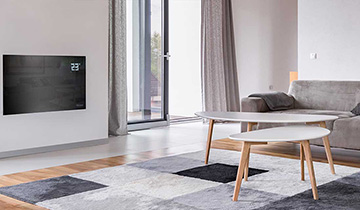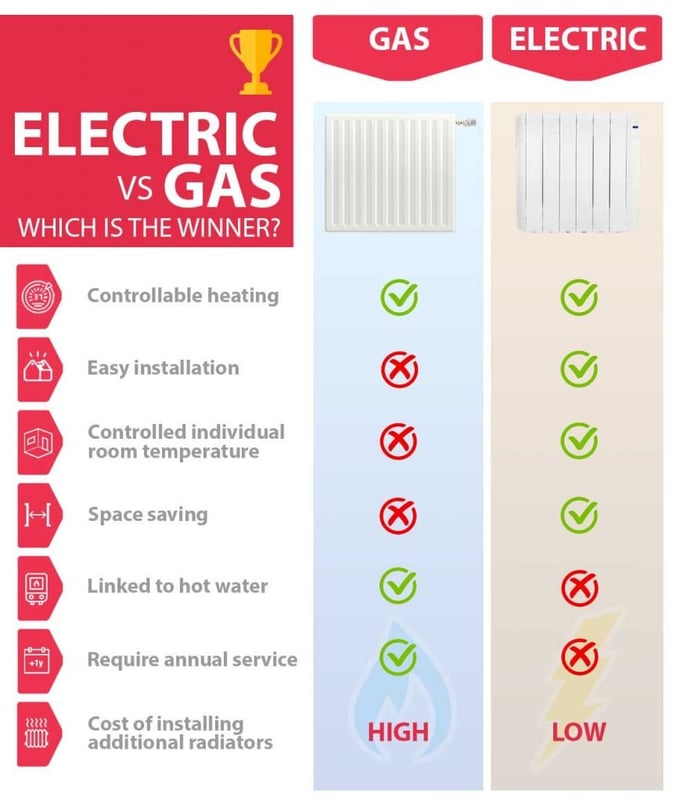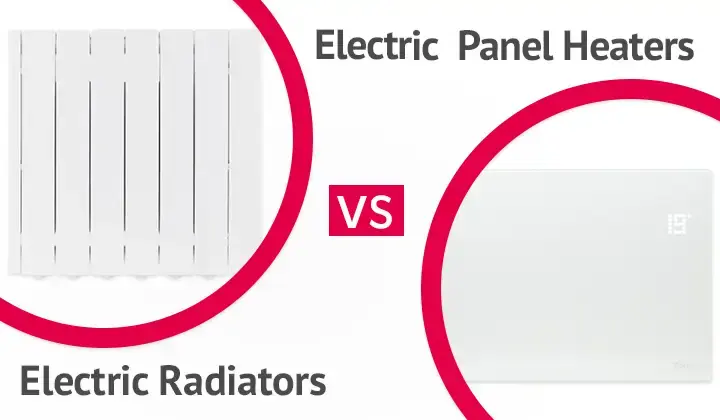5 min read
What’s the best electric radiator to buy?
If you are considering electric radiators as a heating option for your renovation or new build project, then you’re probably thinking about what is...
4 min read
 Chris Hedges
:
Jul 29, 2020
Chris Hedges
:
Jul 29, 2020

Popularity in electric heating is rising and it won’t be slowing down any time soon. Let’s take the electric radiator market. By 2025 the European electric radiator market will be worth in excess of £470m and in the UK, the annual installation of units will surpass 300,000 and there are already 2.2m households in the UK using electric heating rather than gas. So, we’ve put together this useful electric radiator guide to help you make the right choice.
Historically gas has always been considered the cheapest way to heat a property and it is used to heat between 80% – 85% of UK homes but what’s causing the rise in the popularity of electric?
Electric heating is clean and respectful to the environment. There are no polluting gases or heavy metals. Gas produces large volumes of CO2 emissions which we all know are detrimental to the environment. That’s one of the main reasons gas boilers are being phased out in new builds by 2025.

Electric heating is also almost 100% energy efficient at point of use. All the electricity you use and pay for converts into heat. When you pay for 1kWh of electricity, 1kW of heat gets transferred into the room for one hour. Why not pair an electric boiler with solar panels? Heating bills will be reduced as you‘ll be generating a lot of your own energy rather than buying everything from a supplier.
Electric heating systems are easier and cheaper to install and require little to no maintenance. Gas central heating requires more ongoing costs such as annual boiler servicing. It is also far more expensive to extend a gas heating system due to the addition of pipework and the labour cost of a qualified professional to install it.
Changes in air flow and differences in room sizes can mean some parts of the house are warmer than others. With electric heating you can control the warmth in different rooms more effectively by using programmable electric radiators. A complete connected heating solution can help reduce annual heating costs by up to 30%!
There are no moving parts which means that an electric heating system rarely breaks down. There are no water-filled pipes so there is less risk of property damage from burst pipework.
With electric heating you do not run the risk of carbon monoxide emissions or any combustible gas leaks making it one of the safest ways to heat your home.
First things first, electric radiators do not radiate heat like other systems such as electric underfloor heating. They use convection which moves air around the room by using the temperature difference between cold and warmer air.
Even though electric heaters are 100% energy efficient at point of use, different types of electric radiators vary how they operate. For example, the oil in an oil filled electric radiator transfers heat uniformly giving a higher proportion of radiant heat compared to convected heat from a convector heater. Fluid filled radiators generally have smaller thermal storage capacity which, at start up, causes slower heat release and prolonged heat release once switched off. A radiator that uses no fluid, heats a room quicker at the start and quickly stops releasing heat when it is switched off.

Landlords have the responsibility to provide central heating (or similar) to each occupied room of the rented property. In the UK, the heating standard is a minimum of 18°C in bedrooms and 21°C in living rooms but only when a temperature reading of -1°C is registered outside. This applies to all residential properties, including houses in multiple occupation.
Landlords in England and Wales, also have a legal obligation to keep the properties they are renting warm and ensure their property is banded E or above on an Energy Performance Certificate.
When renting out a property, it is important to make it as attractive as possible for potential tenants. Property heated by convection heaters or storage heaters could put off potential tenants. Primarily, they are designed to perform as backup heaters and the assumption is that by using them, it will result in higher energy bills.
One of the most popular electric heating devices was Economy 7 Storage Heater for rented properties. But they take a huge amount of energy to heat the bricks inside which caused high electric bills. However, many tenants spend a lot of time outside or at work which makes storage heaters inefficient and bordering obsolete as they don’t match the need of the tenant. Modern electric radiators are far more energy efficient and help to control heating costs even if the Economy 7 tariff is not being used.
More landlords are choosing to install electric radiators as a primary heating system because they are easy to install, energy efficient, simple to control and low maintenance providing the perfect compromise between landlords and the lifestyle of tenants.

The general rule of thumb is the larger the room, the greater the output wattage you will need. But it also depends on how well insulated the room is. For example, our 1200W oil filled electric radiator will comfortably heat a well-insulated room with a floor space of 13m2 but only up to 12m2 if it does not have adequate insulation.
Even if you buy the next most powerful electric radiator, it won’t do any harm. It will just mean that it will turn off more often once the room has reached your desired temperature.
Some electric radiators are quicker to heat up (dry thermal elements) and others such as oil filled radiators take a fraction longer. All our electric radiators are wall mounted and come with everything needed for an easy installation. For large scale projects with multiple installations we would recommended talking to our projects team who can walk you through everything you need to consider to help make a seamless installation.
Being able to accurately control and programme your electric radiator key to ensuring energy efficiency is maintained and heating bills don’t go through the roof. Each of our electric radiators are programmable and include a digital thermostat and are able to monitor the room temperature precisely. This means that the electric radiator turns on less often, and doesn’t unnecessarily use more power than needed which reduces energy consumption.
So, that’s it for now. Why not check out our range of electric radiators or talk to one of the team to find out more.

5 min read
If you are considering electric radiators as a heating option for your renovation or new build project, then you’re probably thinking about what is...

18 min read
If you’re in the process of looking into installing electric radiators or panel heaters for your next project, this article could be just the thing...

5 min read
The way we heat our homes continues to feature heavily in the news and it doesn’t look like it will disappear anytime soon. When ‘Googling’ home...